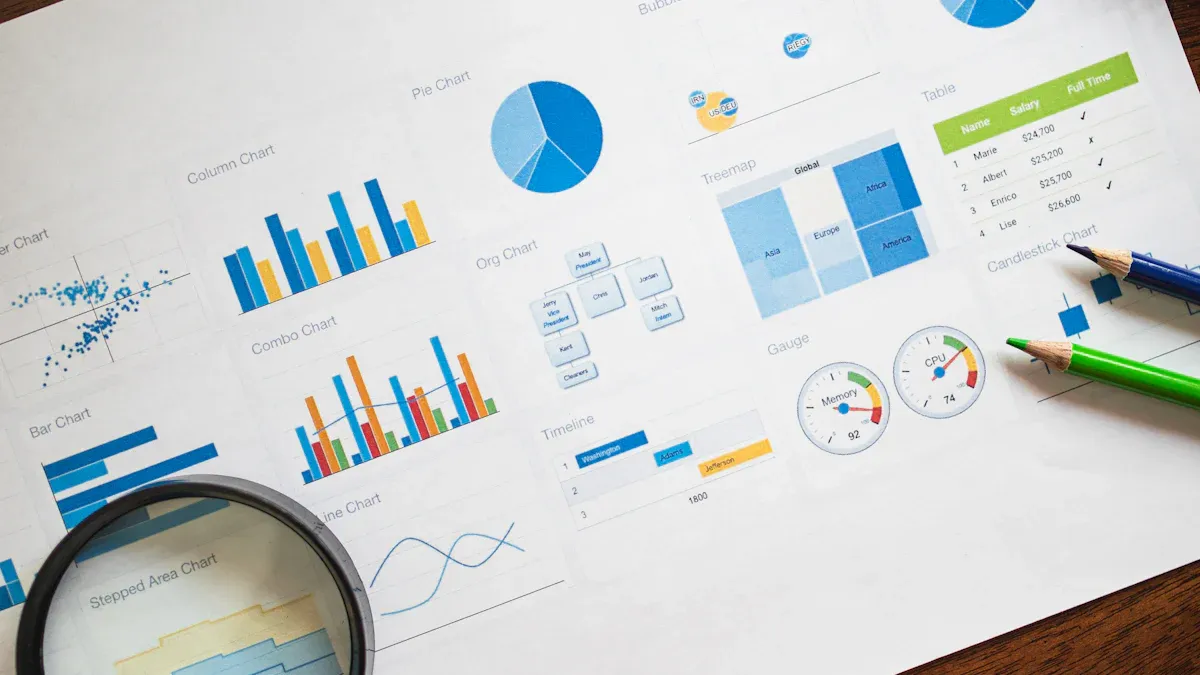
Fashion leaders face urgent 2025 regulatory deadlines. The EU's Corporate Sustainability Reporting Directive (CSRD) and Digital Product Passport (DPP) demand unprecedented data transparency.
AI is no longer optional. It is an essential tool. AI systems transform vast supply chain data into the auditable insights required for compliance.
These tools move beyond simple compliance. They are strategic assets for managing risk, enhancing brand value, and securing a competitive advantage in a transparent market.
The Urgency of AI for 2025 Compliance
Navigating New Data-Intensive Laws
New regulations demand a radical shift in data management. The EU's Digital Product Passport (DPP) for textiles, for example, requires brands to report on up to 16 categories of information. This goes far beyond simple material composition.
- Product Description: General characteristics and performance.
- Composition: Material percentages and origin details.
- Supply Chain: Information on all manufacturing stages.
- Transport: Data on transportation methods and distances.
- Documentation: Certificates and audit reports.
- Environmental Impact: The product's environmental footprint.
- Social Impact: Data on labor conditions and human rights.
- Impact on Animals: Details on animal welfare.
- Circularity: Information on recycled content and repair.
- Health Impact: Data on hazardous substances.
- Information on the Brand: Sustainability commitments.
- Communication/Identification Media: QR codes or NFC chips.
- Quantity: Production volumes.
- Costs: Optional disclosure of manufacturing costs.
- Usage and Customer Feedback: Optional consumer data.
- Tracking and Tracing After Sales: Post-sale lifecycle data.
Non-compliance carries severe risks. Brands face hefty fines, reduced access to capital, and significant reputational damage.
The Limits of Manual Data Collection
Manual data collection cannot handle this complexity. Traditional methods using spreadsheets are slow and prone to human error. Different facilities often track metrics like water usage with inconsistent protocols. This data fragmentation makes it nearly impossible to get a clear, accurate picture of a company's ESG performance. Manual processes simply cannot scale to meet the demands of global supply chains and new regulations. Inaccurate data leads to flawed strategies and compliance failures.
AI for Automated Data Aggregation
This is where AI systems provide a solution. AI automates the aggregation of ESG data from diverse sources. It connects to internal ERPs, supplier databases, and external IoT sensors to pull metrics in real time. Natural Language Processing (NLP) technology can even scan unstructured documents like supplier reports to extract key data points. These AI systems then standardize, structure, and cross-verify the information. This process eliminates manual errors, ensures data integrity, and provides the auditable, comprehensive insights needed for 2025 reporting.
Core AI Systems for ESG Tracking

Specific AI tools are essential for addressing the core pillars of ESG reporting. These systems move brands from high-level estimates to granular, verifiable data across their entire value chain.
Carbon Forecasting and Scope 3 Emissions
Calculating a product's full carbon footprint is a major challenge. Scope 3 emissions, which come from activities outside a company's direct control, often account for over 90% of a fashion brand's total impact. These indirect emissions originate from raw material extraction, textile processing, transportation, and end-of-life disposal.
AI models process vast datasets from hundreds of suppliers to accurately calculate and forecast these emissions. They analyze material choices, manufacturing processes, and logistics routes to identify carbon hotspots. This allows brands to model the impact of different decisions, such as switching to a lower-impact fiber or sourcing from a new region.
AI transforms carbon accounting from a reactive reporting exercise into a proactive strategic tool. It provides the foresight needed to design lower-impact products from the start.
Supply Chain Transparency and Risk Scoring
Brands can no longer afford blind spots in their supply chains. AI-powered platforms provide the deep visibility required to meet due diligence regulations. These tools map the entire production journey, identifying every supplier, subcontractor, and facility involved.
Platforms like Retraced offer powerful capabilities for achieving this transparency:
- Visual Mapping: Users can visually trace their complete supply chain from the raw fiber to the finished garment.
- Data Collection: The system gathers validated data directly from suppliers across all tiers.
- AI Verification: AI-powered document checks automatically validate supplier claims and certifications, ensuring data integrity.
Once the supply chain is visible, AI algorithms assess and score each supplier based on risk. These algorithms analyze thousands of data points in real time, including geopolitical instability, environmental violations, and labor standards. AI can issue early warnings about a supplier located in a conflict zone or one with a history of non-compliance. This dynamic risk scoring allows brands to proactively manage disruptions and uphold their ethical commitments.
Circularity and Waste Reduction
The fashion industry's linear "take-make-waste" model is a primary source of environmental damage. AI offers practical solutions to build a more circular system by tackling waste at every stage of the product lifecycle.
AI-driven tools help brands:
- Improve Demand Forecasting: By analyzing sales data and social media trends, AI predicts what customers will buy. This prevents overproduction, the leading cause of unsold inventory and waste.
- Optimize Inventory: AI tracks stock levels in real time, identifies slow-moving items, and supports just-in-time production models.
- Reduce Prototyping Waste: Brands can create digital prototypes and conduct virtual fittings, minimizing the material waste from physical samples.
- Enable Circular Models: AI systems track product lifecycles and usage patterns. This data powers take-back programs, resale platforms, and rental services that extend the life of every garment.
Green Claims and DPP Validation
Regulators are cracking down on "greenwashing." Vague claims like "eco-friendly" or "sustainable" are no longer sufficient. The Digital Product Passport (DPP) will require brands to provide verifiable proof for every sustainability claim they make.
AI technology provides this proof by validating data at the source. For example, AI combined with spectroscopy can identify and sort textile fibers, confirming the exact percentage of recycled polyester or organic cotton in a fabric. This scientific verification ensures claims are accurate and compliant with standards like the Global Recycled Standard (GRS).
This validated data directly populates the DPP. AI systems automate the collection of key information for each product, including:
- A unique product identifier
- Data on material composition and supply chain origins
- The product's calculated carbon footprint
- Information on repairability and recyclability
By linking verified data to a unique digital ID, AI creates an auditable record that travels with the product. This ensures that the information presented to consumers and regulators is trustworthy, transparent, and compliant with 2025 laws.
From Compliance to Competitive Edge
Adopting AI for ESG reporting moves a brand beyond regulatory necessity. It unlocks significant business value and creates a powerful competitive advantage. The investment in this technology delivers measurable returns.
Quantifying the ROI of ESG AI
The return on investment for ESG AI extends far beyond avoiding compliance penalties. Brands achieve direct cost savings through enhanced operational efficiency. AI-driven demand forecasting prevents overproduction, a major source of financial loss and waste. Optimized resource management reduces water, energy, and raw material consumption. These efficiencies directly improve a company's bottom line. The initial investment in AI systems pays for itself through smarter, leaner operations.
Driving Strategy with Data Insights
AI-powered interactive dashboards turn complex sustainability data into clear strategic guidance. Executives can make smarter decisions with real-time information. These dashboards help brands:
- Benchmark against competitors on carbon footprints and material sourcing.
- Vet suppliers by tracking compliance records and environmental certifications.
- Optimize logistics by identifying routes with the lowest carbon emissions.
This data-driven approach allows leadership to connect sustainability efforts directly to retail performance. It shows how ethically sourced products resonate with consumers and drive sales.
Real-World Success Stories
Industry leaders already demonstrate the power of this approach. H&M uses AI to forecast demand, improving its supply chain sustainability. Stella McCartney has taken this even further. She partners with Google Cloud on machine learning projects and integrates ESG metrics directly into financial forecasting. Her brand links physical products to digital identities. This enables real-time tracking of materials and labor conditions, embedding sustainability into core business functions like inventory management and procurement. These brands prove that ESG data is a strategic asset, not just a reporting requirement.
Your AI-Powered ESG Strategy

Transitioning to an AI-powered ESG framework requires a clear, methodical approach. A successful strategy moves in deliberate phases, from building a data infrastructure to embedding insights into daily decisions. This four-step plan provides a roadmap for fashion brands to achieve compliance and unlock strategic value.
Step 1: Build a Solid Data Foundation
Effective AI depends on high-quality data. Brands must first establish a robust data foundation before implementing any advanced analytics. This foundation acts as the single source of truth for all ESG information. The initial step involves identifying and collecting the right data types across the entire value chain.
Key data categories include:
- Environmental Data: This covers a product's carbon footprint (Scopes 1, 2, and 3), water and energy consumption, waste management, and use of recycled or sustainable materials.
- Social Data: This includes information on labor policies, workplace health and safety, employee diversity, and other social initiatives.
- Governance Data: This involves details on corporate ethics, board oversight, and management accountability related to sustainability goals.
A brand's data infrastructure must be powerful enough to centralize this information. It needs to pull data from emails, spreadsheets, and supplier surveys and integrate with existing ERP systems through APIs.
A solid data foundation is built on a platform with specific capabilities. It should feature automated data validation to ensure accuracy, libraries of emission factors for consistent calculations, and tools to bridge data gaps with documented methodologies. This creates the auditable and reliable dataset necessary for both compliance and strategic analysis.
Step 2: Select the Right AI Tools
With a data foundation in place, the next step is to select the right AI tools. The market offers many solutions, but brands should prioritize platforms that meet specific operational needs. The goal is to find a tool that not only collects data but also makes it actionable.
When evaluating AI solutions, look for these essential features:
- Traceability and Transparency: The tool must map the entire supply chain, from raw material to finished product. Blockchain technology can provide immutable records for certifications and provenance.
- System Integration: Choose a cloud-based, API-first solution. It must integrate seamlessly with existing Enterprise Resource Planning (ERP) and Product Lifecycle Management (PLM) systems.
- Real-Time Dashboards: The platform should offer dynamic data visualization. Dashboards with drill-down functionality allow teams to move from a high-level overview to granular insights, like identifying a specific factory with high emissions.
- Framework Alignment: Top-tier AI systems come with built-in templates for major ESG frameworks. Platforms like Novisto and elsAi ESG automatically map a company's data to the specific disclosure requirements of CSRD, GRI, and SASB, which simplifies reporting.
Step 3: Pilot a Use Case and Scale
A full-scale rollout of AI across an entire organization is risky. A smarter approach is to start with a focused pilot program. This allows a brand to test the technology, measure its impact in a controlled environment, and build internal confidence before a larger investment.
A great starting point is a high-impact area like carbon tracking. A pilot program for this use case would follow a clear process:
- Conduct a Readiness Assessment: Evaluate existing data collection processes for carbon emissions and identify any gaps.
- Define Clear Objectives: Set a measurable goal, such as accurately calculating the Scope 3 emissions for a single product line.
- Develop the Pilot: Select a representative sample of suppliers and products for the test. Implement the AI tool and monitor its performance against the defined objectives.
Once the pilot proves its value, the organization can plan for scaling. Scaling presents its own challenges, including managing larger datasets and integrating the tool across different departments. Best practices include a gradual expansion, providing comprehensive training to all teams, and establishing a strong AI governance framework to ensure data security and ethical use.
Step 4: Integrate Insights into Operations
The ultimate goal is to make ESG data a core part of everyday business decisions. AI-driven insights should not live in a separate sustainability report. They must be integrated directly into operational workflows across design, procurement, and logistics.
This integration turns data into action. For example:
- Design: Designers can use product-level impact data to compare the carbon footprint of different materials before a garment is even created.
- Procurement: Buyers can access real-time supplier risk scores. An alert can flag a supplier with recent labor violations, allowing the team to make a different sourcing decision.
- Logistics: AI can analyze shipping routes and suggest alternatives with lower emissions, optimizing both cost and environmental impact.
To achieve this, brands should link their traceability platforms directly to their ERP and PLM systems. This connection automates the flow of information, ensuring that ESG, logistics, and design teams all work from the same data. This cohesive approach transforms sustainability from a compliance burden into a source of operational excellence and competitive advantage.
Adopting AI for ESG is a critical strategic move for fashion companies. It ensures they navigate the 2025 regulatory landscape and build a resilient, future-proof business. Companies that invest in AI-driven ESG infrastructure now secure compliance. They also establish themselves as leaders in efficiency, transparency, and market trust.
Leaders must assess their current data capabilities. They should explore AI solutions immediately to prepare for the 2025 deadline. ⏱️
FAQ
How can small brands afford AI for ESG?
Many AI providers offer Software-as-a-Service (SaaS) models. These subscriptions have lower upfront costs. This approach makes powerful ESG tools accessible to smaller brands. It avoids a large initial investment and allows companies to scale their usage as they grow.
What is the most important first step?
The first step is building a solid data foundation. Companies must centralize their environmental, social, and governance data. This process creates a single source of truth. Clean, organized data is essential for any AI system to work effectively and provide accurate insights.
How long does implementation take?
Implementation time varies. A focused pilot program, like tracking carbon for one product line, can take a few months. A full-scale rollout across the entire company may take over a year. The timeline depends on a brand's data readiness and operational complexity.
Can AI guarantee 100% compliance?
AI is a powerful tool, not a magic solution. 🤖 It automates data collection and analysis, significantly reducing errors and risks. However, human oversight and strategic decision-making remain essential. These elements ensure full compliance with all regulatory requirements.
See Also
AI Sensors Revolutionize Fashion Supply Chains: A 2025 Industry Impact
Innovative AI Solutions: Shaping a Sustainable Future for the Fashion Industry
Optimizing Fashion Retail: Dynamic Safety Stock AI's 2025 Strategic Solution
Forecasting the Future: Predictive Models Transforming Fashion Retail by 2025
Intelligent AI: Streamlining Fashion Returns for Enhanced Efficiency Today